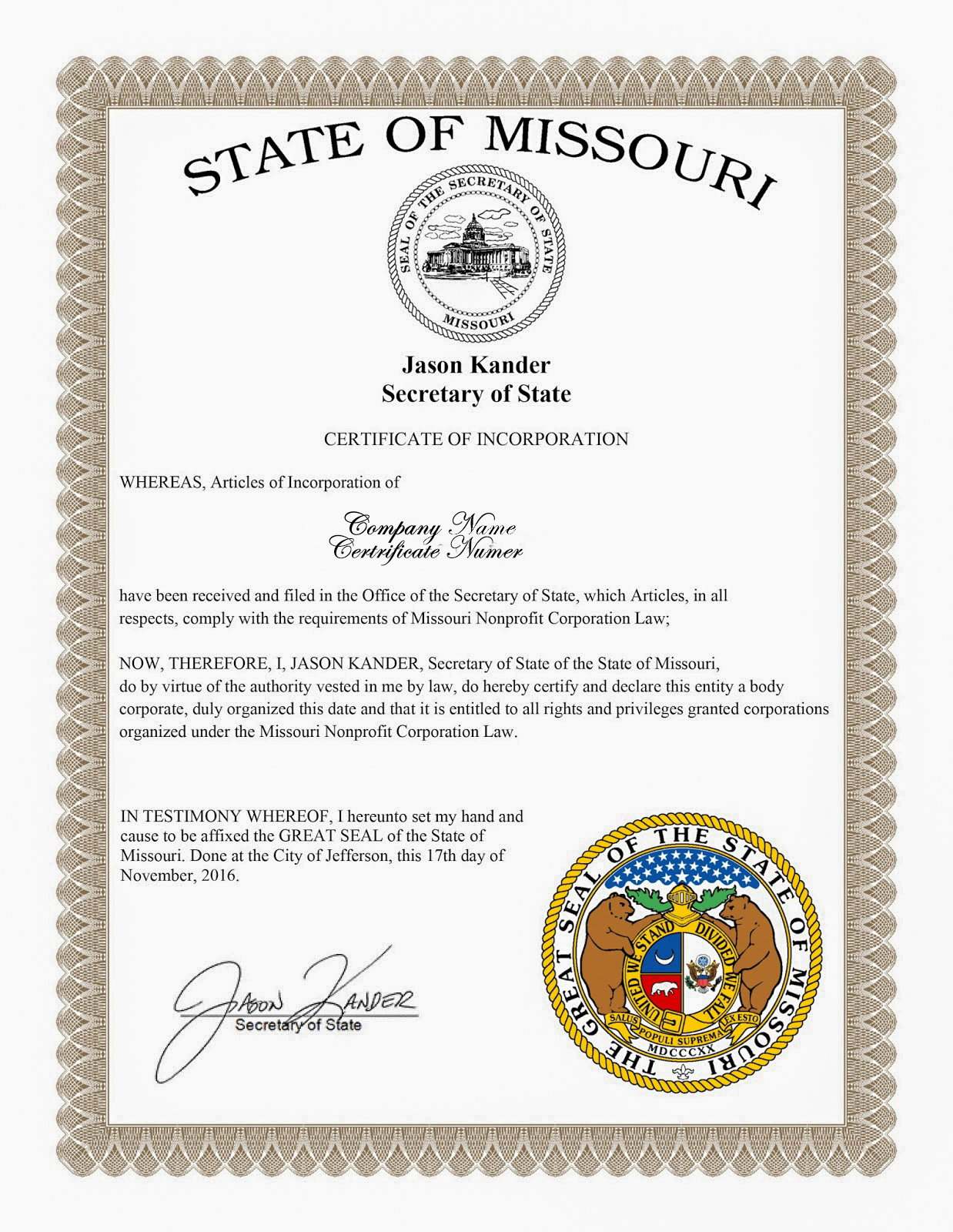Glossary of Terms
Glossary of Terms
Missouri Secretary of State Business Services Website: https://www.sos.mo.gov/business
The Corporations Unit of the Mo SOS Business Services website handles the creation and maintenance of all business entities: https://www.sos.mo.gov/business/corporations
You must create an account to set up and maintain a business in Missouri: https://bsd.sos.mo.gov/Dashboard.aspx?lobID=1
To create or maintain a business: Business Filings in Missouri: https://bsd.sos.mo.gov/Dashboard.aspx
Fictitious Name: A fictitious name, also known as a “doing business as” or “dba” name, is a name that is different from your personal name if doing business as a sole proprietorship, or your entity’s legal name, if you have incorporated or otherwise formed a separate legal business entity.
Corporation types:
LLC:
The limited liability company is a corporate structure that protects its owners from being personally pursued for repayment of the company’s debts or liabilities. LLCs do not pay taxes on their profits directly. Their profits and losses are passed through to members, who report them on their individual tax returns. The primary reason business owners opt to register their businesses as LLCs is to limit the personal liability of themselves and their partners or investors.
- It prevents its owners from being held personally responsible for the debts of the company. If the company goes bankrupt or is sued, the personal assets of its owner-investors cannot be pursued.
- It allows all profits to be passed directly to those owners to be taxed as personal income. That avoids “double taxation” of both the company and its individual owners.
Chapter S vs Chapter C:
Named after the section in which it appears within the Federal Internal Revenue Code, the Subchapter S or Subchapter C Corporation is an IRS tax election option available to eligible businesses.
Choosing the S Corporation election has some significant advantages for some businesses. On the flip side, it’s not ideal for every business. Subchapter S Corporation election, the corporation’s profits and losses flow through to its shareholders’ personal tax returns immediately and are not taxed at the corporate rate. Additional benefits: provides personal liability protection for business owners, a corporation taxed as a Subchapter S Corporation can transfer ownership, S Corporations, unless they have inventory, may do their accounting on a cash basis, which is less complicated. In addition, a business might find that potential customers, vendors, and partners perceive it as more credible if it operates as an S Corporation rather than a sole proprietorship or partnership.
Disadvantages of a Subchapter S corporation include: May come under closer scrutiny by the IRS and other tax authorities if there are employees, only eligible domestic corporations and LLCs qualify for S Corp status, Because of the flow-through taxation (business income taxed at the individual tax rates) with the S Corporation, shareholders of a corporation may end up in higher tax brackets, must use the calendar year as the tax year, and Owners who do substantial work for a Subchapter S Corporation are considered employees, that brings payroll responsibilities, which involve making sure owners get paychecks with the correct withholdings of income taxes, Social Security and Medicare taxes (FICA), unemployment taxes (FUTA), and possibly other taxes.
Most of these disadvantages do not apply to artists unless there are plans to hire employees or create an organizations larger than an individual.
Non-profit Corporations
are organizations incorporated under state laws and approved by both the state’s Secretary of State and its taxing authority as operating for educational, charitable, social, religious, civic or humanitarian purposes. A nonprofit corporation (also called “not for profit corporation”) is formed by incorporators, has a board of directors and officers, but no shareholders. These incorporators, directors and officers may not receive a distribution of (any money from) profits, but officers and management may be paid reasonable salaries for services to the corporation. Upon dissolution of a nonprofit corporation its assets must be distributed to an organization existing for similar purposes under the “cy pres doctrine.” In order for contributions to the corporation to be deductible as charitable gifts on federal income taxes, the corporation must submit a detailed application (with a substantial fee) for an Internal Revenue Service ruling that it is established for one of the specific nonprofit purposes spelled out in the Internal Revenue Code.



